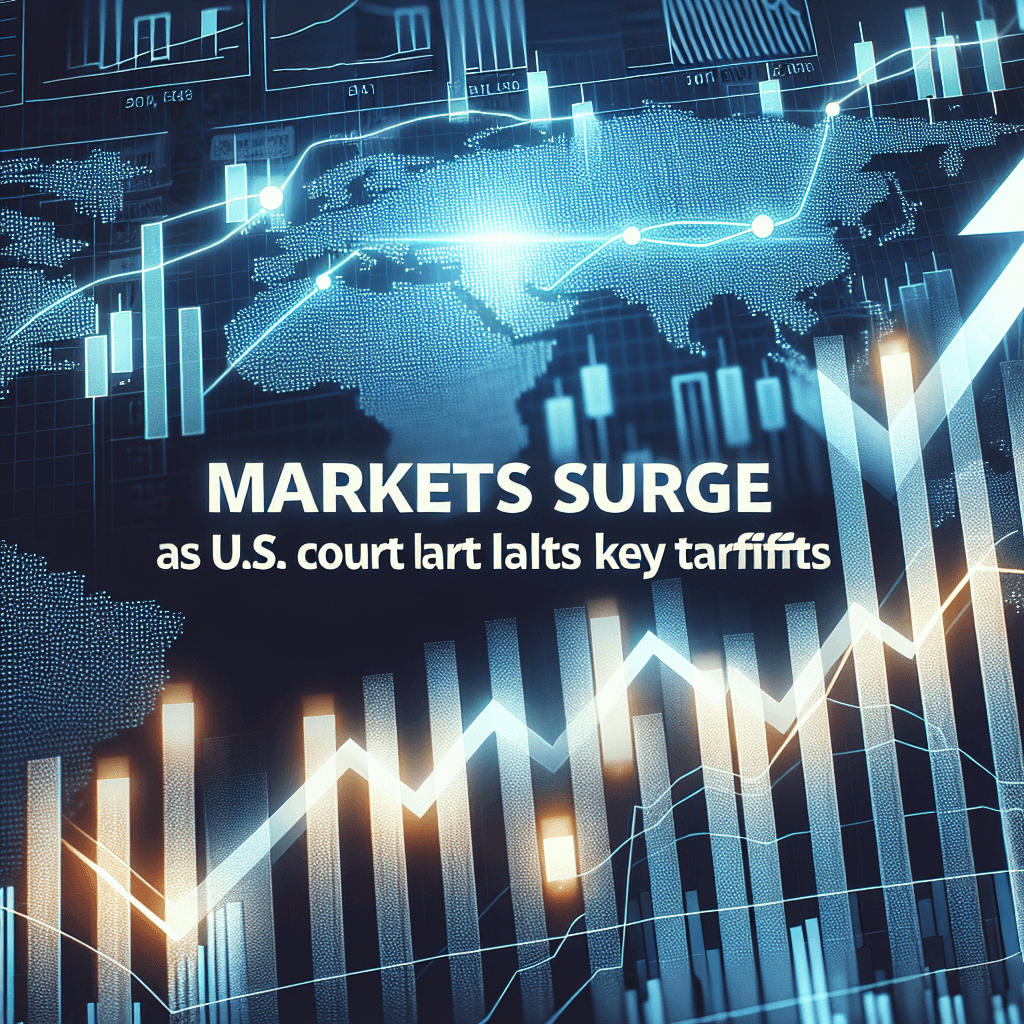Markets Surge as U.S. Court Halts Key Tariffs

Market Overview
Global equities climbed sharply after the U.S. Court of International Trade in New York ruled late Wednesday that President Donald Trump exceeded his authority under the 1977 International Emergency Economic Powers Act (IEEPA) when he imposed sweeping increases in import duties. The benchmark S&P 500 advanced 0.8% in early Thursday trading, the Dow Jones Industrial Average added 64 points (0.1%), and the Nasdaq Composite surged 1.4%, led by technology stocks.
- Asia Pacific markets outperformed, with Japan’s Nikkei 225 up 1.9%.
- Germany’s DAX gained 0.4%, France’s CAC 40 rose 0.8%, while the U.K.’s FTSE 100 was flat near 7,620.
- Key Asian indices: Hong Kong’s Hang Seng +1.3%, Shanghai Composite +0.7%, South Korea’s KOSPI +1.9%.
Technical Ruling Details
The three-judge panel found that IEEPA authorizes the President to impose sanctions or trade restrictions on countries or individuals in a declared national emergency, but does not explicitly grant the power to levy ad valorem tariff increases under Section 232 or Section 301 of the Trade Act of 1974. The court noted:
“The text of IEEPA does not reference modifications to the Harmonized Tariff Schedule of the United States or authorize adjustments to MFN (Most Favored Nation) rates beyond existing statutes.”
This interpretation calls into question levies exceeding 10%, including the 25% tariffs on steel and aluminum, and the double-digit duties imposed on Chinese imports.
Immediate Implications
- White House Appeal: The administration has filed an expedited appeal to the U.S. Court of Appeals for the Federal Circuit. In the interim, tariff measures remain paused, but could be reinstated pending the higher court’s decision.
- Investor Sentiment: Equity investors were relieved by reduced policy uncertainty, sending volatility indices lower. The CBOE VIX dropped 6% to 14.8.
- Bond and Currency Markets: The 10-year Treasury yield ticked up to 4.52% from 4.47%, while the dollar strengthened modestly to 144.98 yen.
Technology Sector Outperformance
Tech stocks led gains after Nvidia reported fiscal Q3 revenue of $23.6 billion, beating analyst estimates by 4%, driven by its Data Center division (up 60% year-over-year). The chipmaker’s GAAP EPS of $4.52 topped Street consensus of $4.10, highlighting resilient demand for AI-optimized GPUs despite tariff uncertainty.
- Broadcom and AMD both rallied 3.1%.
- Super Micro Computer jumped 4% on buoyant server sales forecasts.
- Major internet stocks Apple and Amazon each gained about 2.5% amid improved supply-chain visibility.
Section: Impact on Currency and Fixed Income
The ruling prompted a temporary strengthening of the U.S. dollar against major currencies. USD/JPY spiked to 145.20 before settling near 144.98. Market participants cited reduced risk of trade-war escalation underpinning dollar demand, while Japanese exporters may face margin relief. On the fixed-income side, the yield curve steepened modestly as front-end yields retraced lower on risk-on flows, with 2-year Treasuries down 3 basis points.
Section: Legal Precedents and Authority
Legal scholars note this decision establishes a narrow interpretation of IEEPA, reaffirming that tariff authority resides primarily with Congress under the Trade Act and related statutes. Professor Maria Rossi of Georgetown University points out, “This ruling underscores the judiciary’s willingness to scrutinize executive action for clear congressional delegation. Future administrations will need explicit legislative backing for unilateral tariff adjustments.” The appeal process could take 6–12 months, leaving uncertainty over the permanency of the injunction.
Section: Industry and Supply Chain Implications
Manufacturers in the U.S. and abroad have endured inventory buildups and logistical bottlenecks amid tariff volatility. According to a survey by the National Association of Manufacturers, 62% of respondents reported deferred capital spending due to uncertain import costs. A sustained block on new tariffs could accelerate restocking, while tariff reinstatement risk still discourages long-term procurement contracts. Freight forwarders at the Port of Los Angeles are monitoring cargo flows for early signs of normalization.
Outlook and Risks
While the court’s decision offers a “breather” for global commerce, analysts caution that the appeal outcome remains the ultimate determinant of trade policy trajectory. Moody’s Analytics warns that if tariffs return, GDP growth estimates for 2025 could be revised down by up to 0.3 percentage points. Meanwhile, central banks will assess the interplay of tariffs, inflation, and growth in upcoming policy meetings.